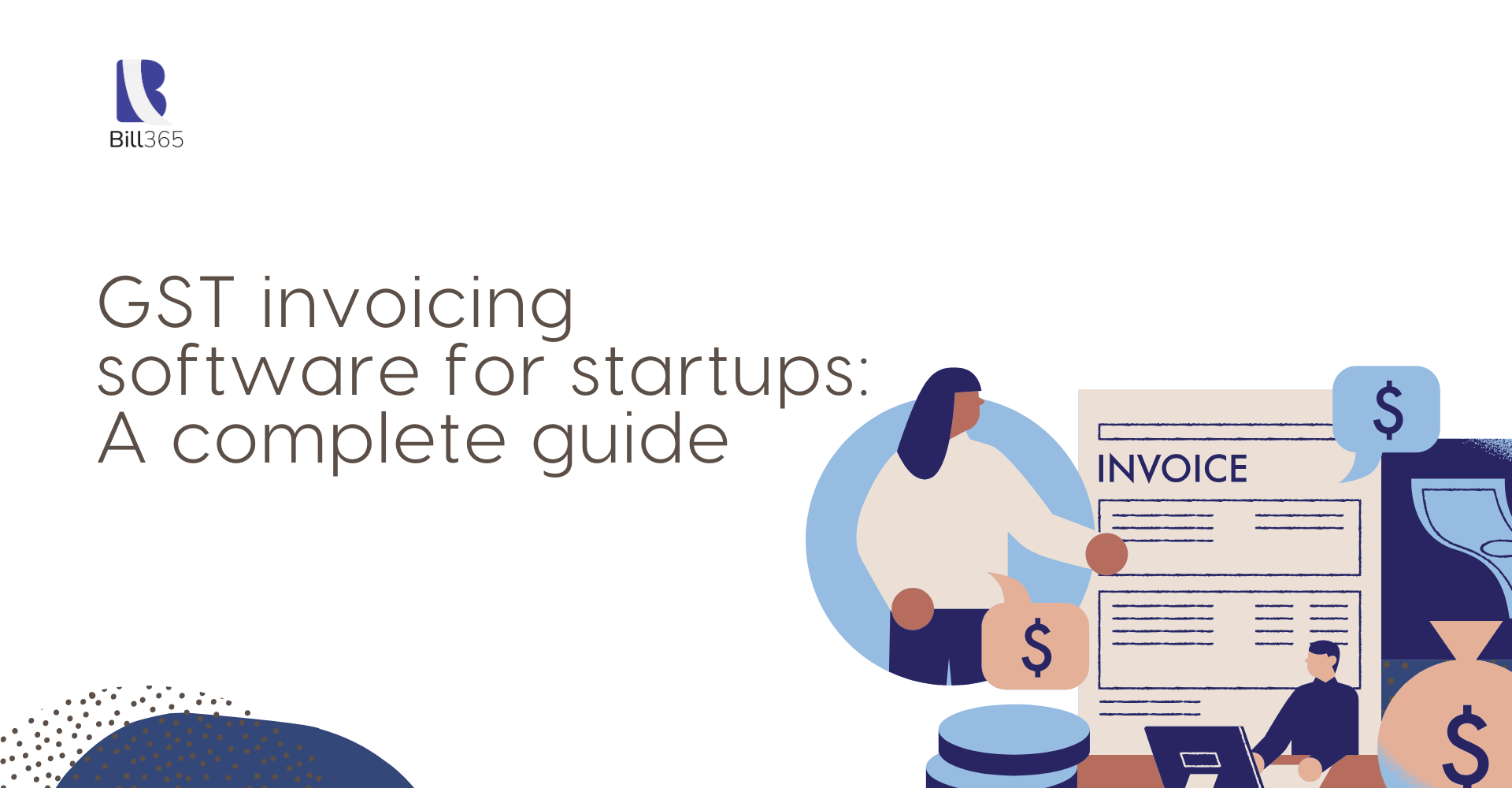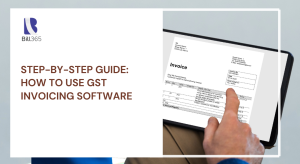
GST invoicing software for startups: A complete guide
Starting a business comes with many responsibilities, including managing finances and following tax rules. One important part of this process is handling GST returns. GST invoicing software for startups makes tax management simple and accurate. This software helps generate invoices, calculate GST, and file returns without mistakes. It also tracks input tax credits and organizes records for easy access.
GST invoicing software for startups is a helpful tool for new businesses. It automates tasks that would otherwise take a lot of time if done manually. The software ensures that invoices follow GST rules, reducing the chances of errors and penalties. It also sends reminders for filing deadlines, so businesses never miss an important date.
With this software, startups can focus more on growth instead of tax-related tasks. It saves time, improves accuracy, and helps new businesses stay GST-compliant. Choosing the right invoicing software can make financial management smoother and more efficient for any startup.
Why Startups Need GST Invoicing Software?
Running a startup is exciting, but it also comes with responsibilities like managing invoices and filing GST returns. Using GST invoicing software for startups can make this process easier and more accurate. Here are three key reasons why every startup should use this software:
1. Saves Time and Reduces Manual Work
Time is valuable for startups, and managing invoices manually takes a lot of it. GST invoicing software for startups automates tasks like tax calculations and invoice generation. It helps businesses avoid manual errors and speeds up the entire invoicing process. With this software, startups can spend more time on growth and less on paperwork.
2. Simplifies GST Compliance
Following GST rules can be tricky, but GST online invoicing software makes it simple. The software ensures invoices are GST-compliant by automatically applying the correct tax rates. It also helps track input tax credits and prepares reports for easy tax filing.
3. Provides Better Financial Insights
Startups need clear financial reports to make smart decisions. GST online invoicing software generates real-time reports that show sales, tax payments, and input credits. These insights help startups plan better and stay GST-compliant without confusion. that’s why you should invest in GST billing software today.
Key Features to Look for in GST Invoicing Software
Choosing the right GST invoicing software for startups is important for smooth and error-free tax management. The right software can save time, reduce mistakes, and simplify GST compliance. Here are some key features that every startup should look for:
1. Automatic GST Calculation
Calculating GST manually can lead to mistakes. GST invoicing software for startups automatically calculates CGST, SGST, and IGST based on the transaction details. It ensures every invoice has the correct tax rate, reducing the risk of errors and helping businesses comply with GST rules.
2. Easy Invoice Generation
Startups need to create GST-compliant invoices quickly. GST online invoicing software makes this simple by generating invoices with all necessary details, such as GSTIN, tax rates, and invoice numbers. The software also allows customization to include the company logo and contact details, which is one of the most essential features for any startup.
3. Real-Time Reporting and Tracking
Understanding a business’s financial status is important. GST online invoicing software provides real-time reports on sales, purchases, and tax payments. These reports help startups track input tax credits and file accurate GST returns on time.
Step-by-Step Guide: How to Use GST Invoicing Software
Using GST invoicing software for startups can make tax management simple and stress-free. It helps with invoicing, tax calculations, and GST return filing. We have already talked about how to set up GST billing software. Here’s a step-by-step guide to using GST invoicing software for startups effectively:

1. Install and Set Up the Software
Getting started with GST invoicing software is easy. Download and install the software on your computer or mobile device. Open the application and enter essential business information, such as the company name, GSTIN, PAN, and registered address.
This step ensures your invoices follow GST rules and regulations. Additionally, configure settings like invoice numbering and tax rates. Proper setup is crucial for generating accurate invoices. The software often includes a guided setup process to simplify this task, even for beginners. Once set up, test the software by generating sample invoices to ensure it functions correctly.
2. Customize Invoice Templates
Businesses can customize invoices to match their brand identity. GST invoicing software for startups allows you to add a logo, business details, and other required information. Make sure the template includes fields for GSTIN, invoice number, tax breakdown, and payment terms.
Customizing invoices ensures a professional appearance and compliance with tax regulations. The software usually offers various templates to choose from, making it easy to create invoices that reflect your business style. Regularly review and update templates to accommodate any changes in GST rules.
3. Add Customer and Supplier Details
To generate accurate invoices, add customer and supplier details to the software. Include names, addresses, GSTINs, and contact information. This data helps track transactions and simplifies GST return filing. The software stores these details for future use, saving time on repetitive tasks. Properly maintained records help in preparing accurate GST returns and reducing errors. Organize your customer database with categories if possible, which can simplify reporting and reconciliation later.
4. Generate GST-Compliant Invoices
Use the software’s invoicing feature to create GST-compliant invoices. Select the correct tax category (CGST, SGST, or IGST) and enter product or service details. The software calculates the GST amount automatically and generates an invoice with all the required information. Ensure that each invoice contains the necessary fields, such as HSN/SAC codes, invoice date, and total tax amount. Regularly check invoice formats to stay updated with regulatory requirements.
5. Track Sales and Purchase Transactions
Recording all sales and purchase transactions is essential for accurate GST filing. GST invoicing software features include automated transaction tracking, which records every invoice and purchase in real time. This feature helps businesses monitor cash flow and generate reports easily. Tracking transactions accurately also simplifies the reconciliation process, reducing the chances of errors. Regularly review transaction logs to catch discrepancies early and ensure data integrity.
6. Calculate Input Tax Credit (ITC)
GST invoicing software for startups calculates input tax credits based on purchase records. Ensure all supplier invoices are recorded correctly. The software will automatically determine the ITC amount and help reduce tax liabilities. ITC calculation is essential for minimizing tax outflow and optimizing financial resources. Regularly verify supplier GST details to avoid ITC rejections during return filing. The software often includes ITC summary reports for easy monitoring.
7. Generate GST Reports
Generating accurate GST reports is simple with GST online invoicing software. Select the reporting period and generate GSTR-1, GSTR-3B, and other necessary reports. The software presents the data in a clear format, ready for submission. These reports provide insights into tax liabilities and input credits. Ensure that reports are reviewed for accuracy before filing. The software typically offers customizable report formats to meet different business needs.
8. File GST Returns Online
GST invoicing software features an online filing option. Connect the software to the GST portal, select the relevant reports, and file returns without hassle. The software also sends reminders about upcoming deadlines. Online filing simplifies the process and reduces paperwork. Make sure to use secure login credentials when connecting to the GST portal. Regularly check for software updates to maintain compatibility with GST portal changes.
9. Reconcile GST Data
Reconciliation ensures that sales and purchase records match the GST portal data. Use the reconciliation feature in your GST invoicing software to compare records and identify any discrepancies. Regular reconciliation helps avoid penalties due to mismatched data. The software typically highlights differences for easy resolution. Schedule reconciliation tasks periodically to keep records accurate and updated.
10. Backup and Secure Data
Protecting financial data is essential for startups. GST invoicing software for startups often includes automatic backup options. Enable these features to secure data and prevent loss due to technical issues. Regular backups ensure that information is not lost during software updates or hardware failures. Choose software with strong encryption and access controls to safeguard sensitive financial information. Data security should be a priority for any business handling GST returns.
3 Common Mistakes Startups Make with GST Invoicing and How to Avoid Them
Startups often face challenges when handling GST invoicing. Understanding these mistakes can help businesses avoid costly errors. Here are three common GST invoicing software mistakes and ways to avoid them:
1. Incorrect GST Calculation
Mistakes in GST calculations can cause compliance issues. Incorrect rates, tax amounts, or invoice details lead to discrepancies in tax filings. GST billing software can prevent these errors by automatically calculating taxes based on the latest GST rules. To avoid mistakes, ensure the software is updated regularly and verify settings when setting tax rates.
2. Missing Invoice Details
Invoices without essential details, like GSTIN, invoice number, or tax breakdown, are invalid. Startups often overlook these fields when creating invoices manually. GST billing software ensures these fields are pre-filled, reducing the chances of missing details. Regularly review invoice templates and train staff on the importance of accurate data entry.
3. Delayed GST Return Filing
Missing GST return deadlines can result in penalties. Startups may forget due dates or struggle to prepare reports on time. GST billing software features automated reminders and easy-to-generate reports. To avoid delays, schedule regular report reviews and use the notification settings within the software.
Future of GST Invoicing Software for Startups
The future of GST invoicing software for startups looks promising as businesses continue to adopt digital tools for financial management. With ongoing advancements in technology, GST billing software will become more efficient, user-friendly, and accessible. Cloud-based platforms will dominate, allowing startups to access invoicing features from anywhere.
Automation will play a crucial role in simplifying tax compliance by reducing manual data entry and calculation errors. Real-time data synchronization with GST portals will make filing returns quicker and more accurate. Artificial intelligence may also enhance the software’s capabilities by predicting errors and providing insightful financial reports. The future of GST invoicing software will focus on providing secure, scalable, and adaptable solutions to meet the evolving needs of startups.
As regulations change, software providers will continue updating their systems to ensure compliance. Startups investing in modern GST invoicing software will benefit from improved efficiency, reduced compliance risks, and better financial insights. Embracing this technology will not only simplify GST management but also contribute to overall business growth. The future of GST invoicing software for startups is undoubtedly bright, with innovations set to make financial tasks easier and more accurate for new businesses navigating GST regulations.
Conclusion
GST invoicing software is essential for startups to manage tax compliance effectively. It simplifies invoicing, automates tax calculations, and ensures accurate GST filings. By using reliable GST billing software, startups can save time, reduce errors, and focus on growth. Embracing this technology ensures smooth financial management and prepares businesses for future success.
